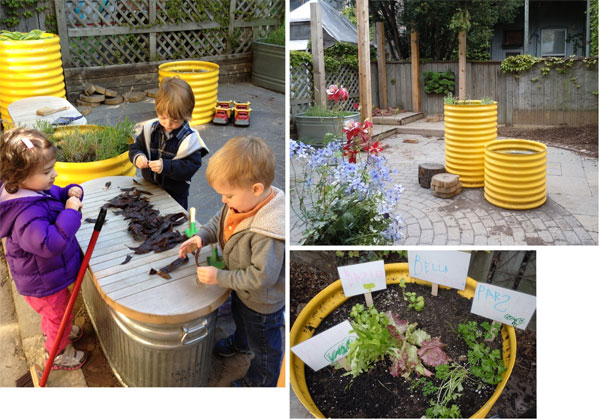
Lincoln Park Cooperative Nursery School in Old Town recently upgraded its 500-square-foot backyard to an “outdoor classroom” with help from the Arbor Day Foundation’s Nature Explore program and Christy Webber Landscapes. The space, filled with planters, rain barrels, wood “tree cookie” stepping stones, and natural woodchips and brick pavers with which children can dig and build, doesn’t exactly resemble a typical preschool playground. School director Shannon Nagy said teachers wanted to create an outdoor extension of the classroom—a space for children to garden, dig, build, make art, engage in dramatic play, and enjoy water activities—a space often difficult to come across in urban environments.
We wondered what we could learn about creating outdoor spaces that benefit children and also please the adult eye. Nagy gave us these tips.
• Use nice-looking indoor-outdoor fabric to create a little stage area for children's dramatic play (the school built multilevel wooden platforms for this purpose).
• Natural materials like wood, brick, and stone are preferable to plastic and other synthetic materials.
• Consider leaving a space for digging and manipulating soil, sand, and/or water (the school has a designated messy area)—and be okay with the fact that this area is going to be less aesthetically pleasing than the rest of your garden. The benefits for children outweigh the distress of the mess!
• Designate space for an outdoor art studio where kids can draw, collage, sculpt, build mobiles from natural materials, paint with watercolors, or observe the movements of insects and document them on clipboards.



